A jig to adapt “the Intonator” to an Ovation guitar
The Intonator (pictured below) is a device that can save a significant amount of time through quickly adjusting the string break points on the saddle, and lets a luthier adjust them on the fly while completing a setup – and the break points can be accurately measured and converted into a permanent saddle. Adjustment of action is also possible.
The first picture here shows the Intonator on a pin-style bridge, which it is explicitly designed for. However, some guitars (namely Ovations), do not have a pin-style bridge, and the strings go through the back of the bridge itself. This bridge configuration is fantastic for down-tuning, and Leigh had been mulling over how to adapt the Intonator to an Ovation style bridge for some time.
Since five of his guitars are Ovations, it would be a long and difficult battle to adjust all of them using other methods.
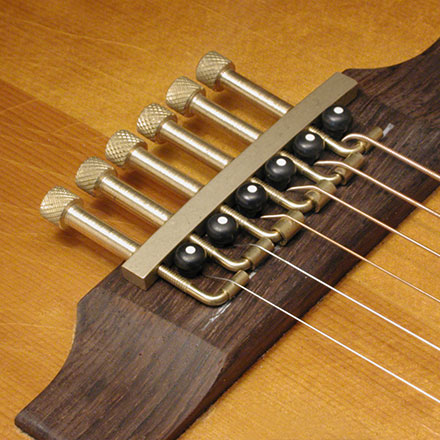
Finally, it was time to make something. Leigh started with a concept on paper and a few assumed dimensions.
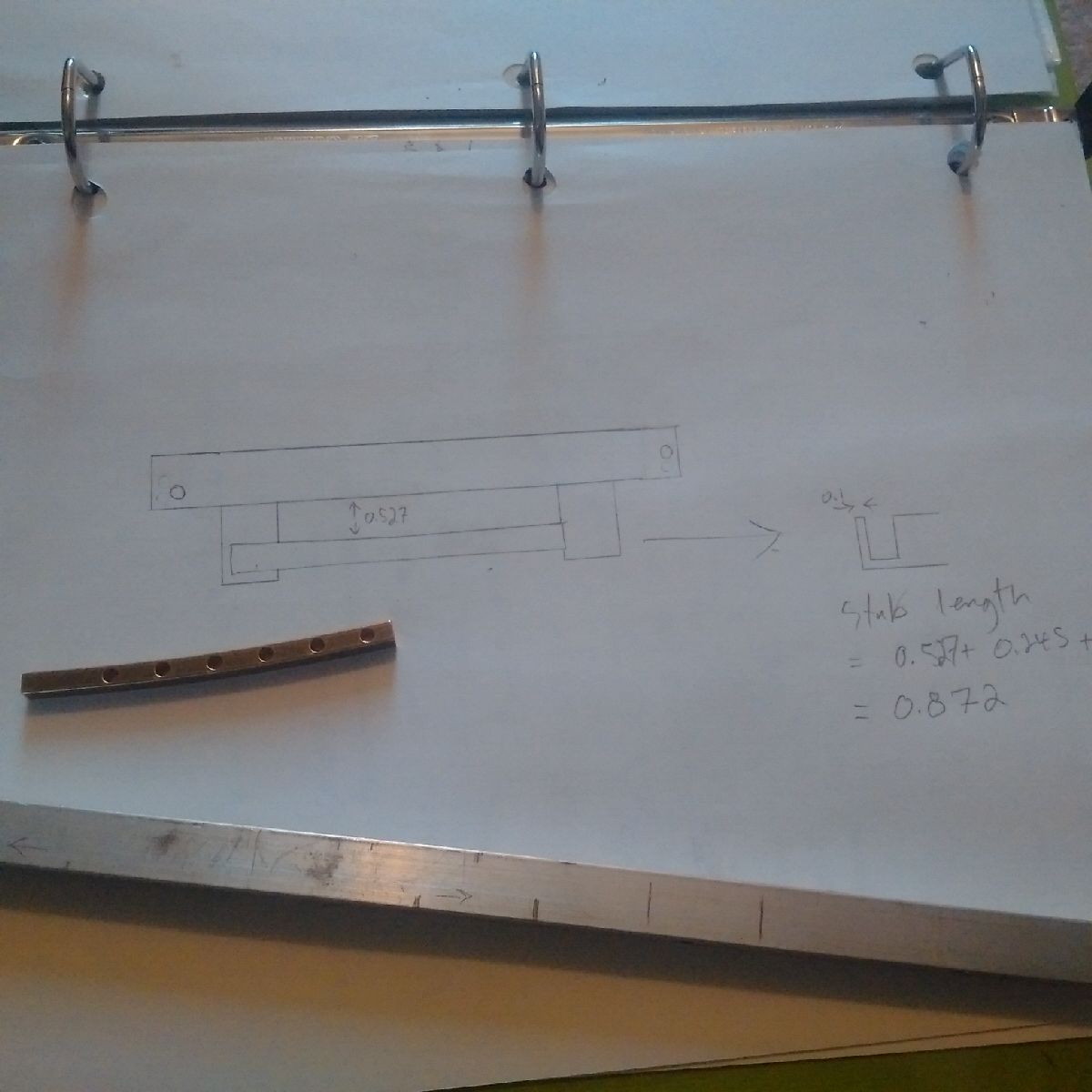
Having the idea in mind, with a significant amount of hack-fabrication experience and scrap aluminum lying around, Leigh began to cut and fit pieces together. These are the 1/2″ blank pieces of aluminum bar.
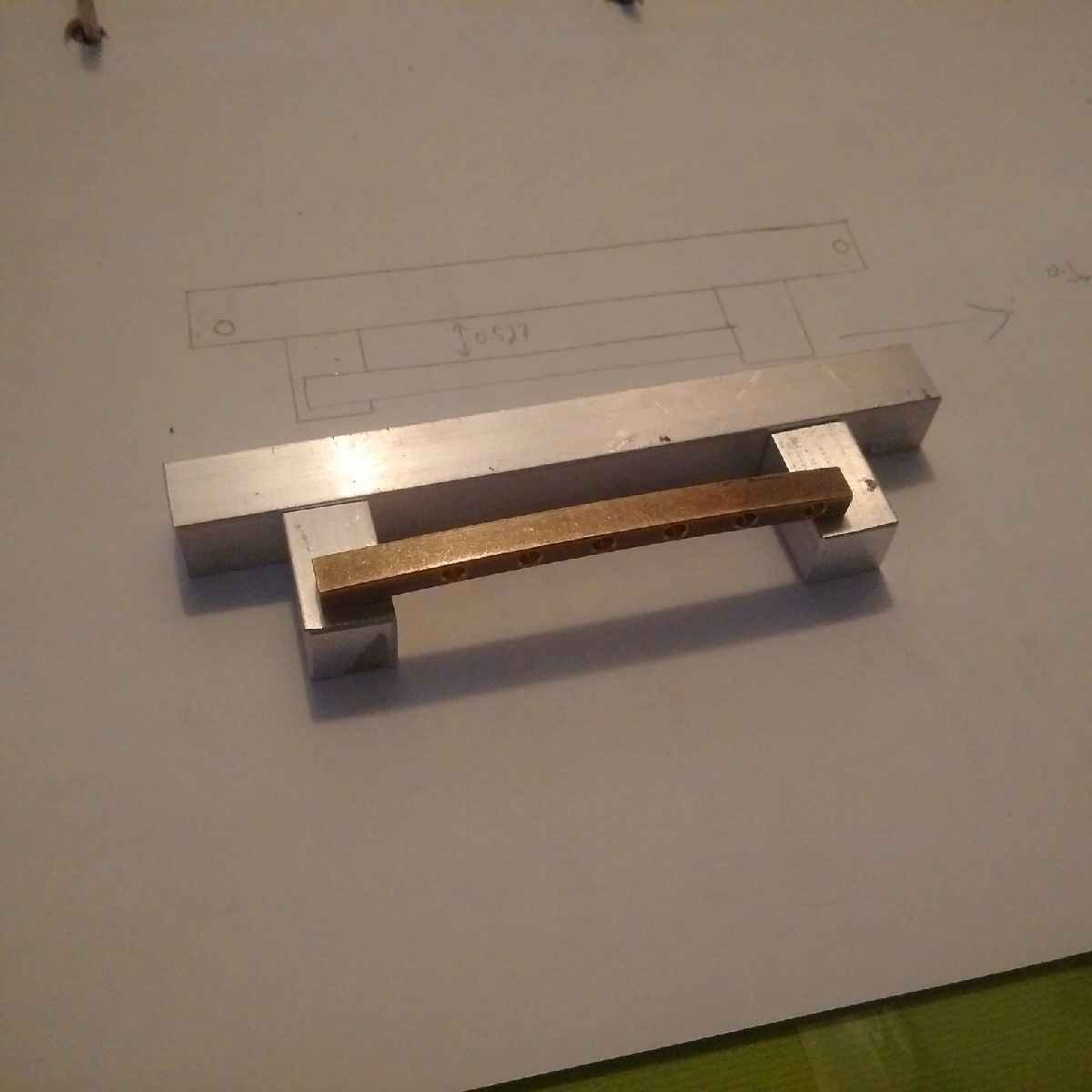
Needless to say, there are some fabrication steps missing in this post, but in order to get the pieces to have the approximate dimensions they should, Leigh did lots of iteration doing “field fits” on his 12-string, then running to the garage to hack at the pieces with an angle grinder and dremel. Later, they looked like something intentional.
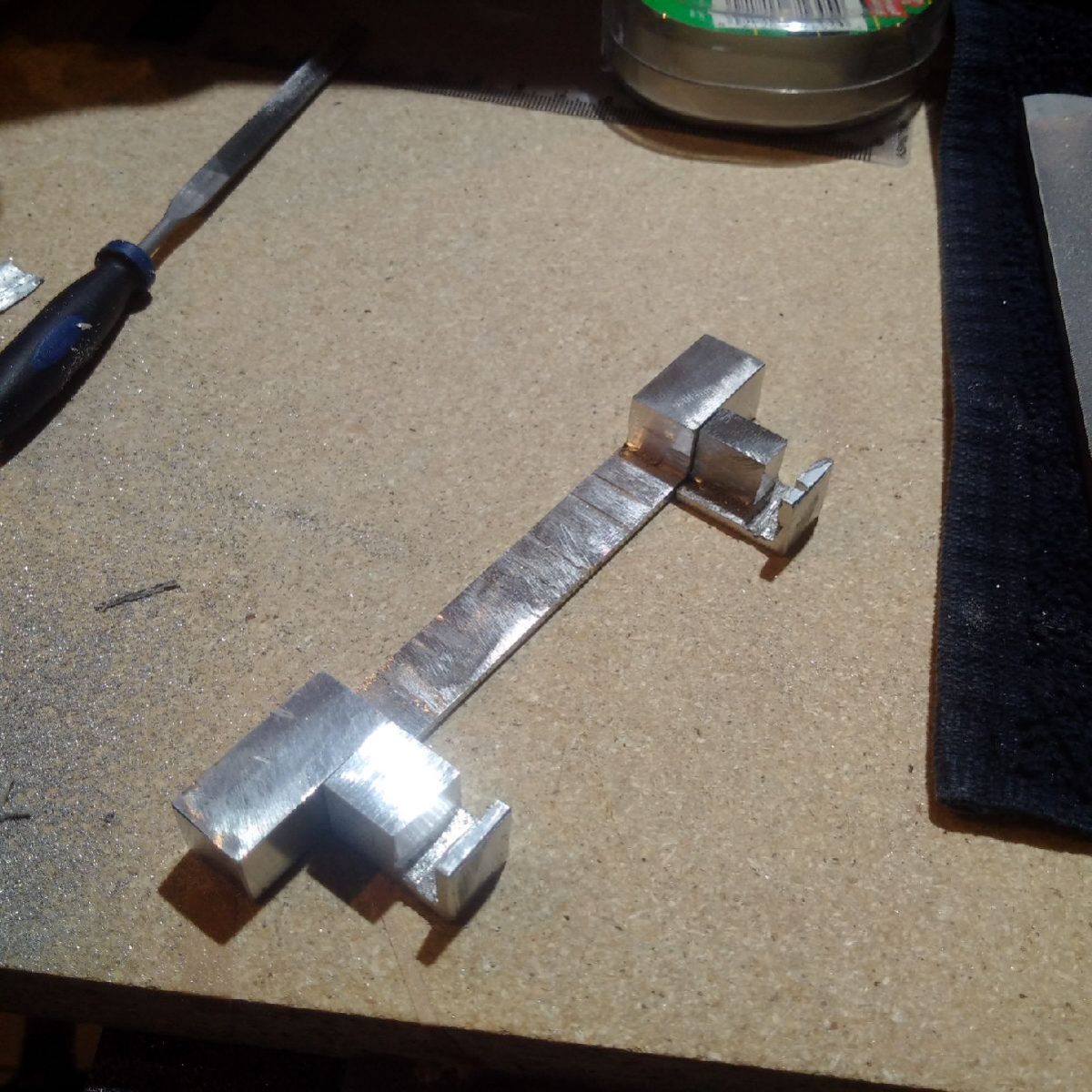
The three main pieces were glued together with West System epoxy, and holes were drilled and tapped for two “stays” on either side. These stays will be the contact points between the jig and the bridge itself.
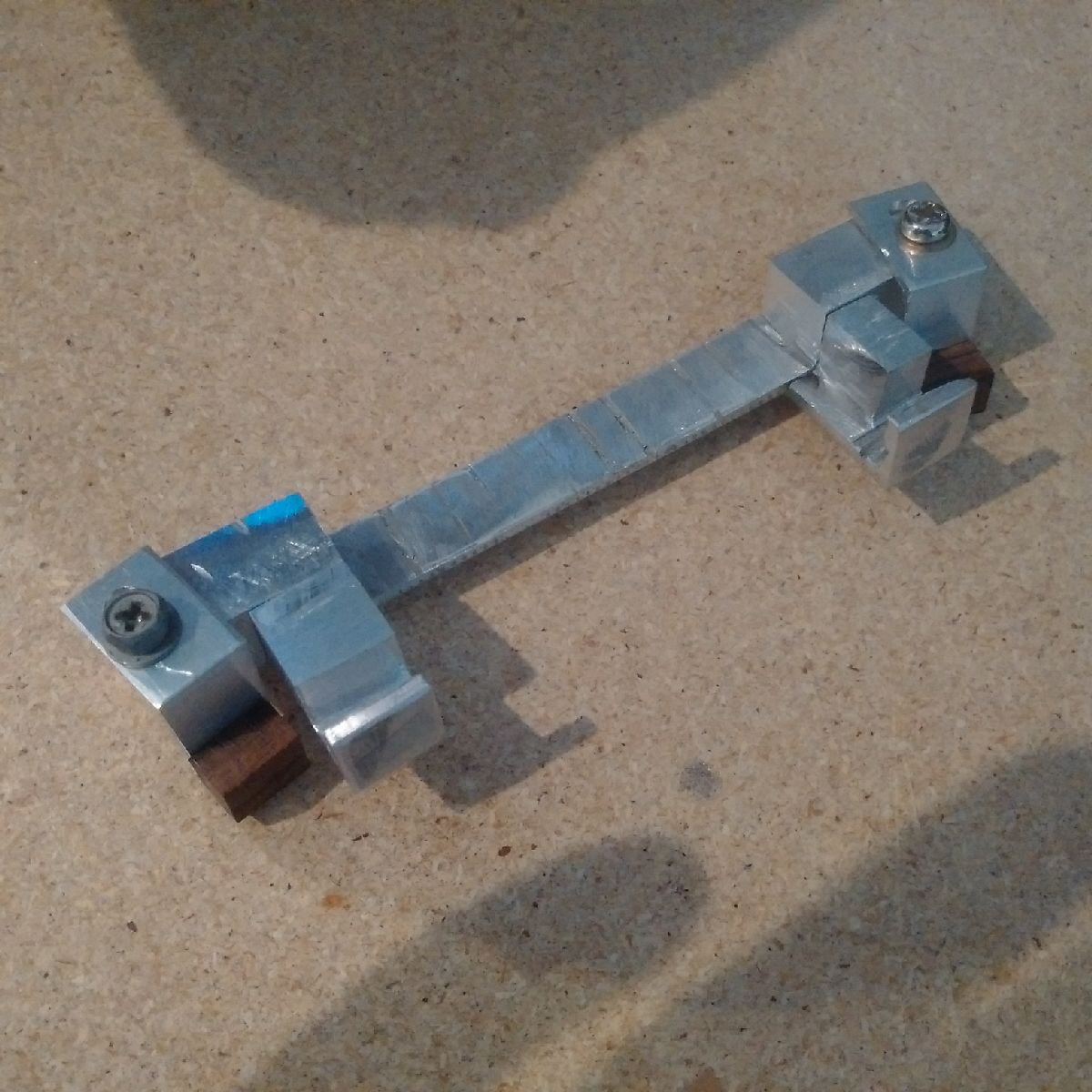
Next, it was time to do some final fit-ups.
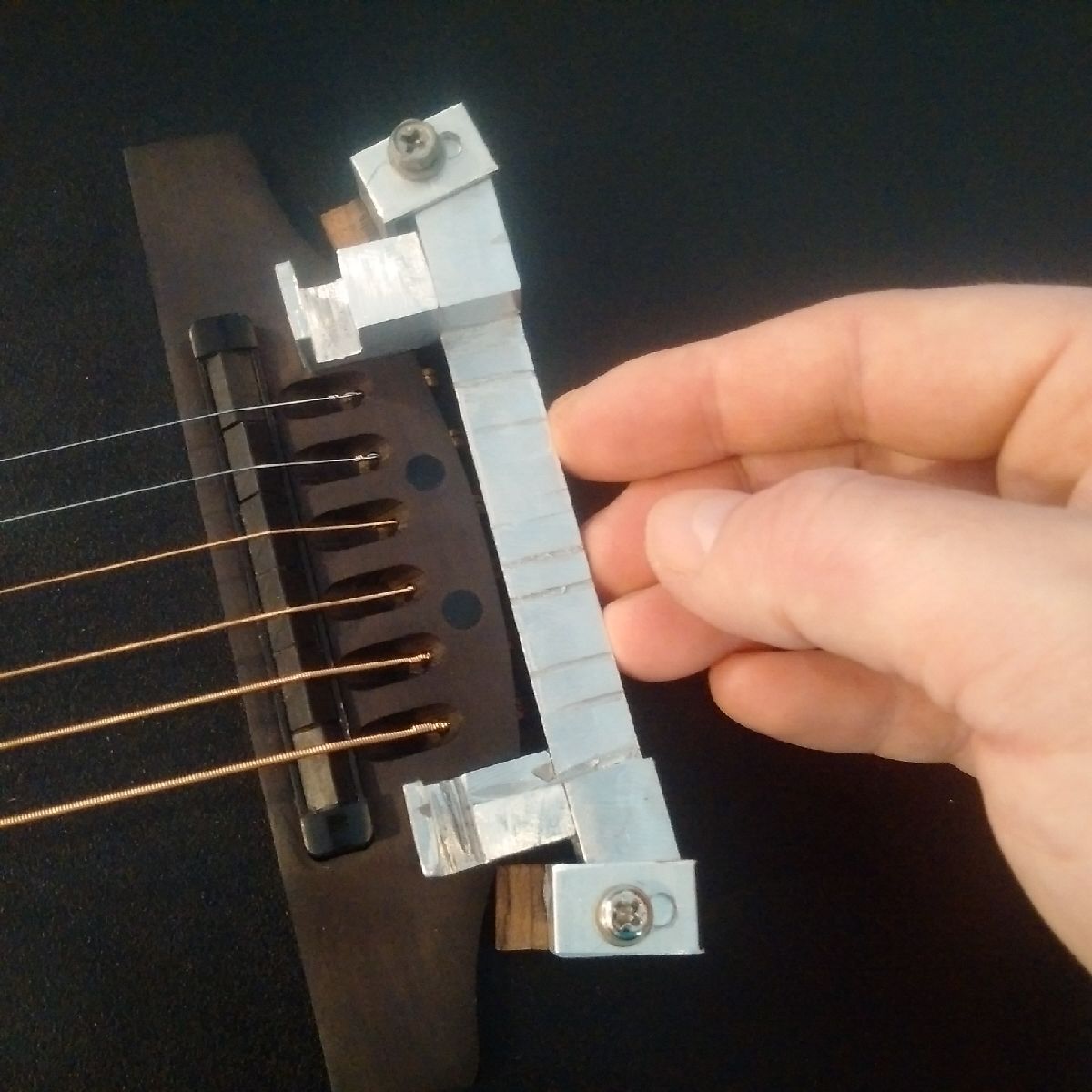
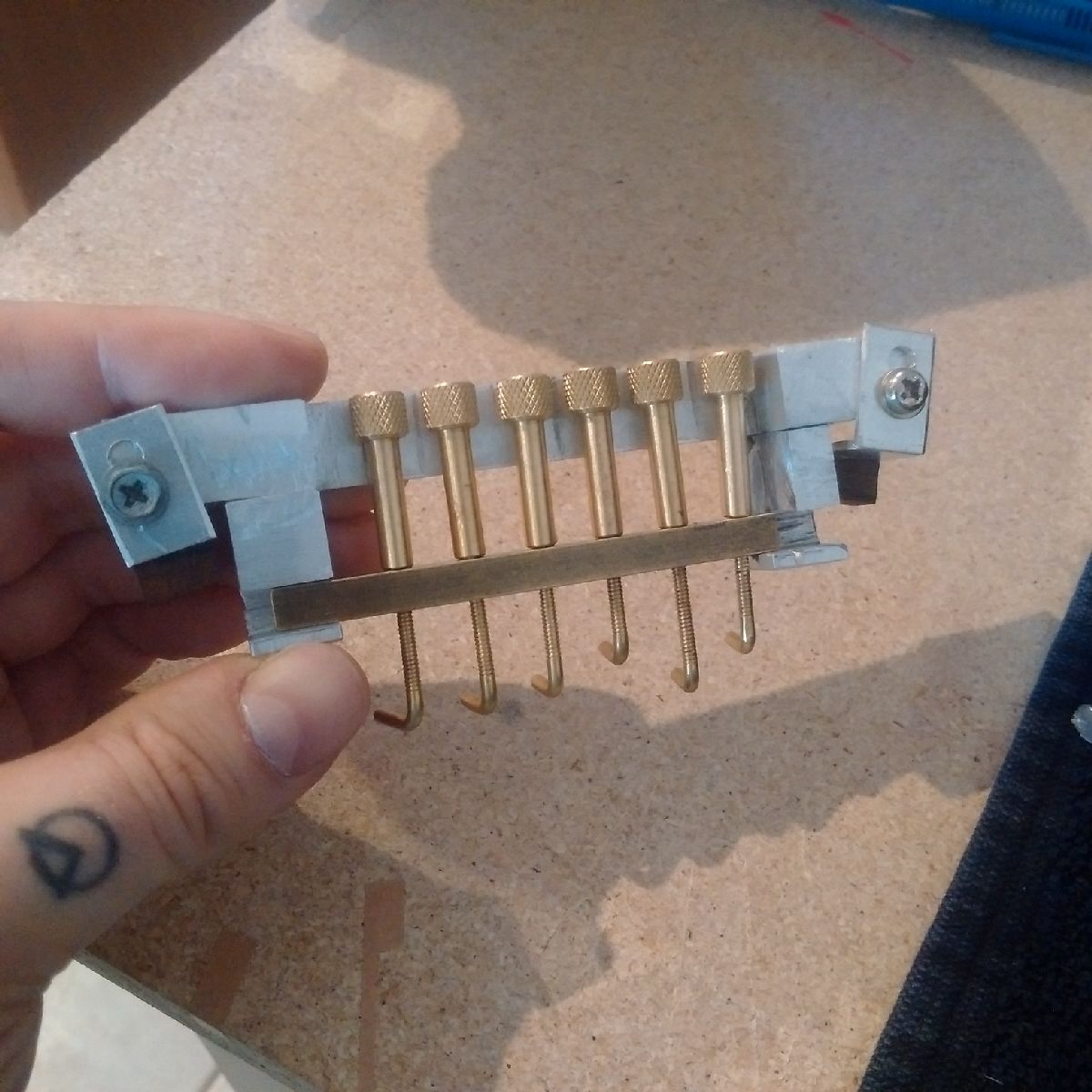
The test guitar (which will ultimately be tuned down to Drop A#) was tuned to Drop Eb and the standard intonation points were determined. It sounded great… for a guitar that still needed a lot of adjustment other than the intonation points.
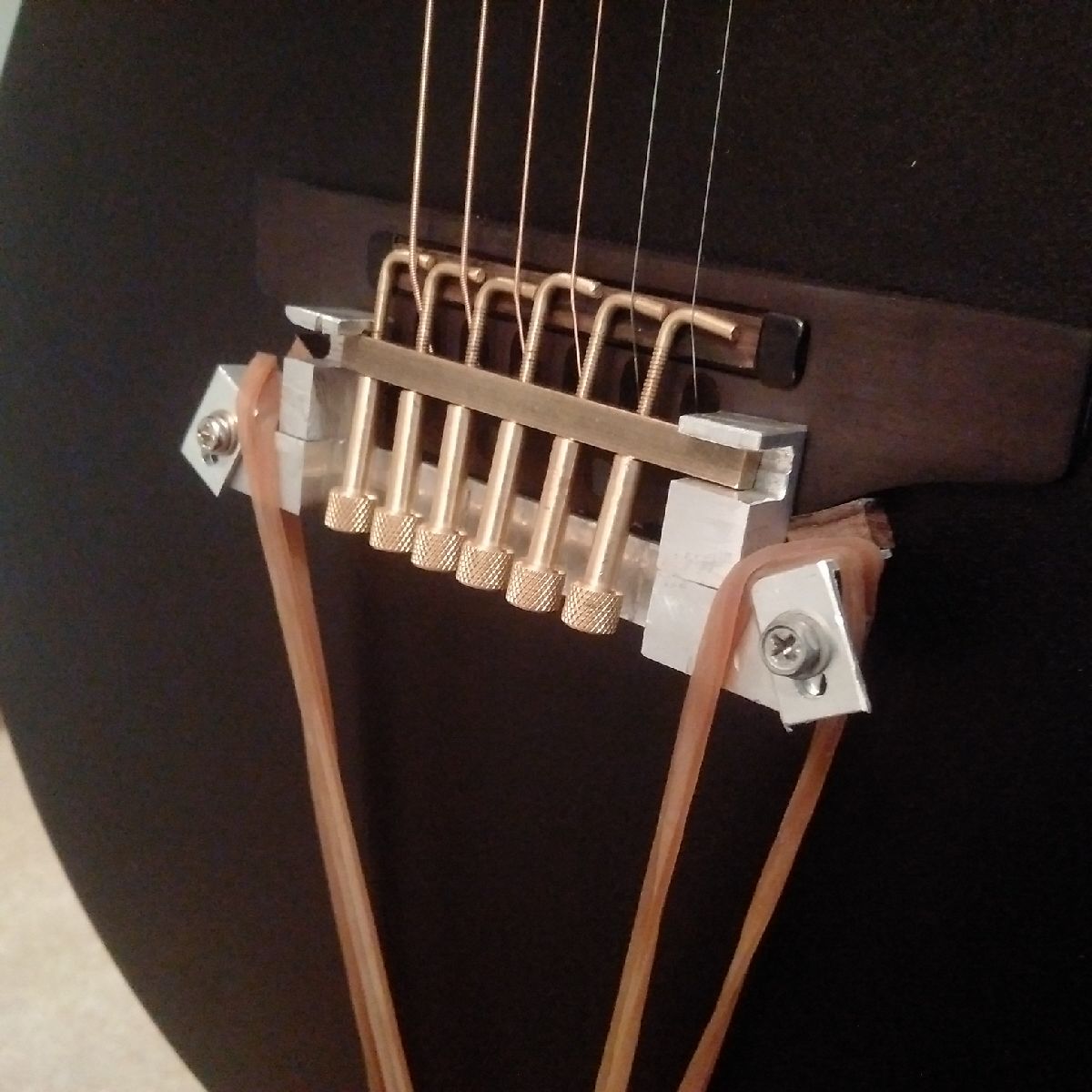
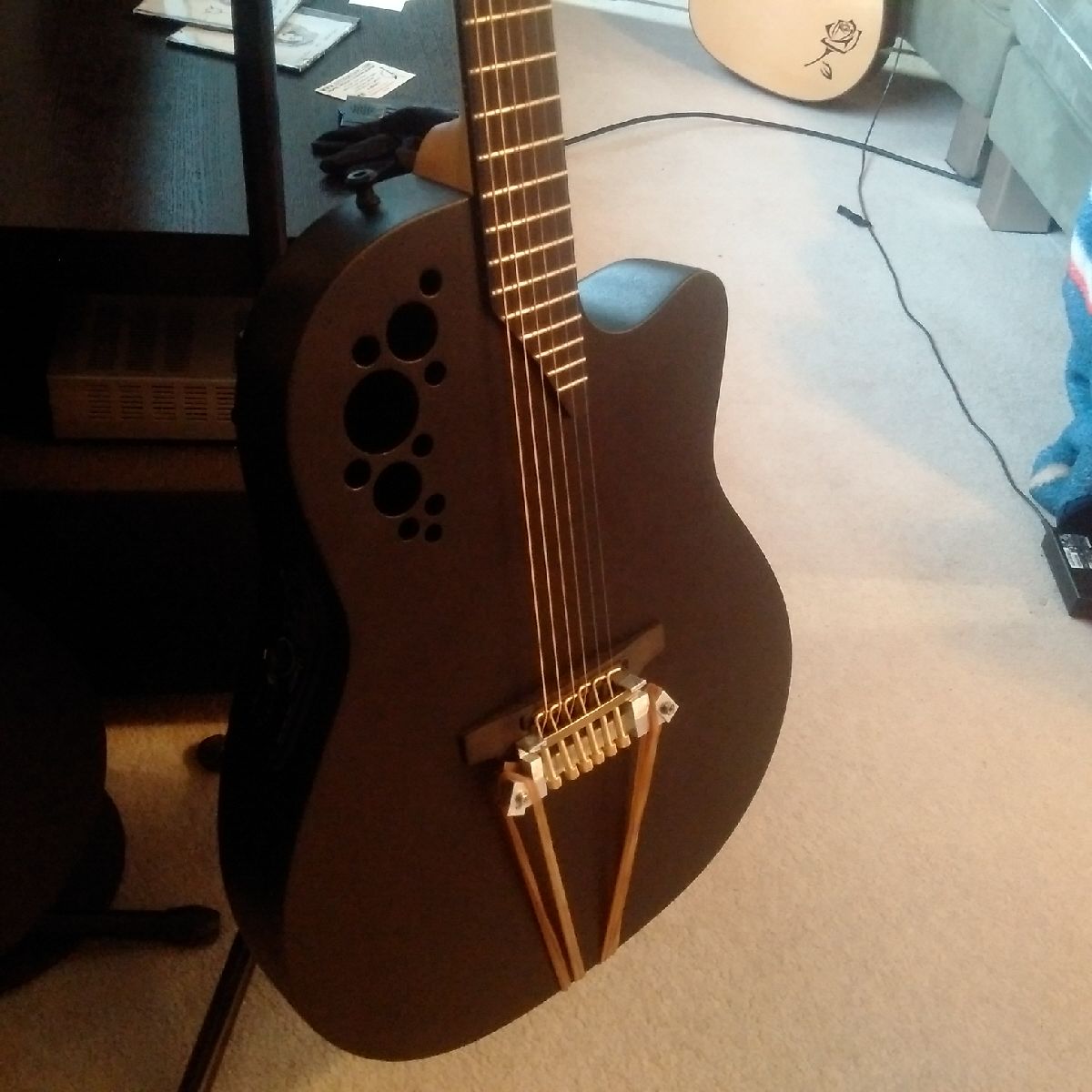
Up next, downtuning to Drop A# and installing the Buzz Feiten retrofit.
Here’s an audio clip of the Drop Eb guitar with standard intonation and no setup:







